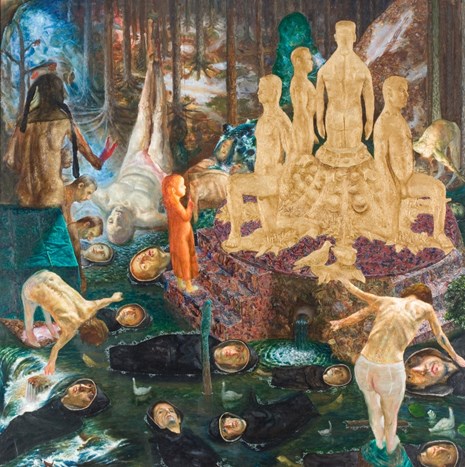Šarūnas Sauka can safely be called a leading artist of his generation, who appeared on the Lithuanian art scene in the 1980s. Since his studies, his surrealist style has set him apart from the prevailing Expressionist painting in Lithuania. He soon became widely recognised by his style. His themes, his highly personal visions of Hell and Purgatory, have taken to the extreme the tradition, started by older artists, of creating individual mythologies in their paintings.
Sauka constructs his paintings by connecting one detail-symbol with another, until the painting is complete. He takes his symbols from the Bible, literature and art, and then modifies them or invents symbols of his own. Clusters of symbols refer to complex plots dealing with questions of sin and cleansing, leaving them for spectators to develop and complete. In the paintingCove II, the main plot revolves around a golden idol and human figures bowing before it in adoration. Thus, it speaks about the worship of false deities. The golden idol is standing on a pedestal in water, a symbol of purification. The water carries half-dead bodies down rifts, until they are washed clean. For their faces, Sauka has used his own self-portrait, as in many of his other works. A small girl in the centre does not bow, but observes the figure of the idol. This little girl, looking with her innocent eyes at the doings of doomed adults crippled by life, recurs frequently in his paintings. The upper left-hand corner of the painting is luminous with the colour blue, which is a divine colour and a source of Salvation. The inversion of beauty and ugliness, good and bad, life and death, is characteristic of the surrealist paintings by Sauka.



